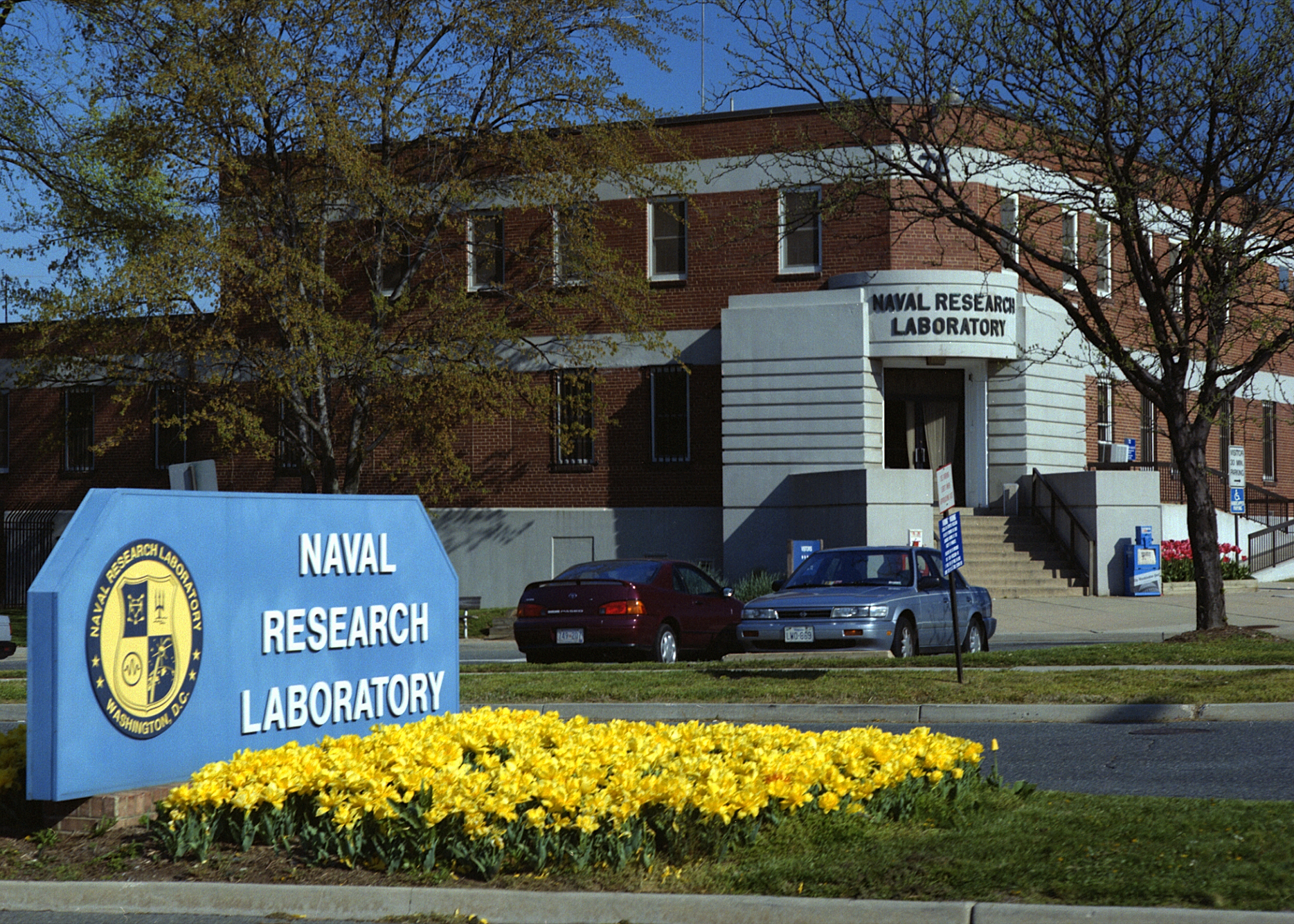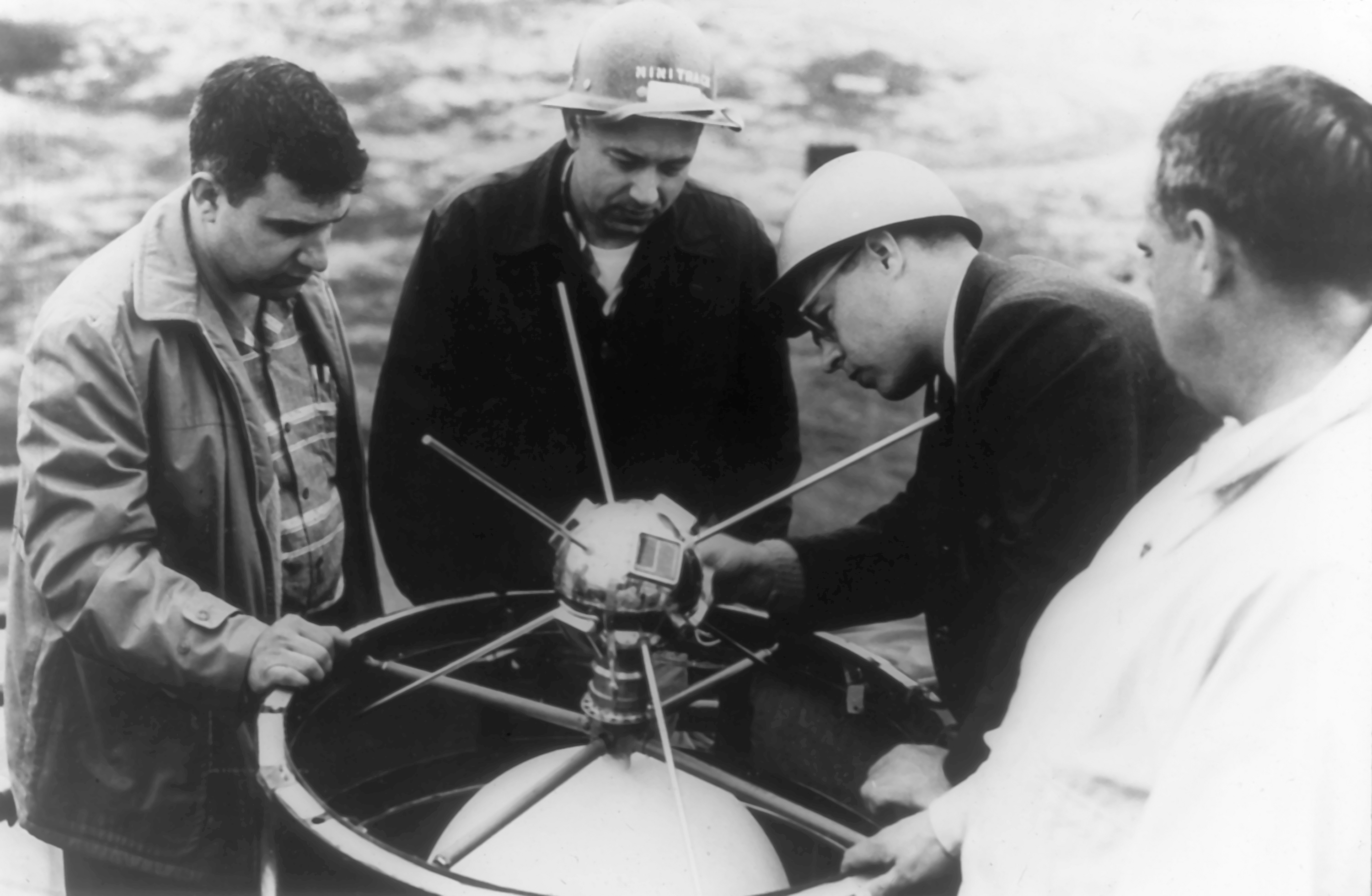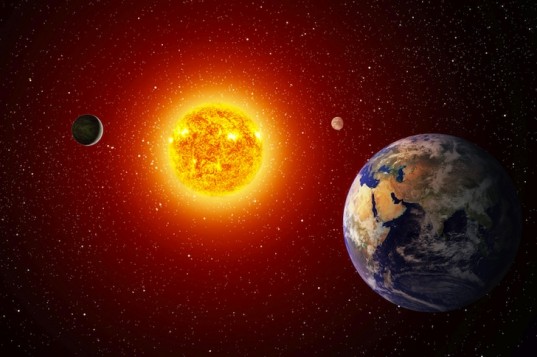
The U.S. Naval research Lab ‘s Building 72.
(Photo/Image provided courtesy of the Naval Research Laboratory.)
As the source for almost all things, the ocean may just be where we find solutions to climate change as well. This past spring the U.S. Naval Research Laboratory (NRL) announced that it had developed a process to extract carbon dioxide and hydrogen gas from the ocean and convert it into fuel-like molecules. This process could eventually fuel Navy jets and help provide energy independence for our military.
While this development flew mostly under the radar when announced, it opens the door for big possibilities. Turning seawater into fuel could one day help reduce our nation’s dependence on oil and our carbon footprint to steer us towards a more sustainable future. With ocean’s accounting for 96.5 percent of the 71 percent of the earth’s water this new energy option is abundant and available.
Today, we hear from Dr. Heather Willauer, a research chemist in the Materials Science and Technology Division at the NRL. Dr. Willauer explains the revolutionary process of turning seawater into fuel-like molecules, what this means for the military and our nation’s future, and how the Navy is combating climate change and researching alternative energies. We welcome her insights.
– – –

A team of Vanguard I scientists mount the satellite in the rocket.
(Photo/Image provided courtesy of the Naval Research Laboratory.)
What work happens at the U.S. Naval Research Laboratory?
Founded in 1923, NRL is a campus-like complex of diverse scientific facilities headquartered in Washington, D.C. With a compliment of approximately 2,800 employees consisting of researchers, engineers, technicians and support personnel, the laboratory carries out basic and applied research on the forefront of the physical and chemical sciences, computer science, and engineering
Who works at the Naval Research Laboratory?
The internal organization is divided into five directorates; four conducting scientific research, and one designated the Naval Center for Space Technology. The varying directorates employ civilian federal workers, contractors, students from academia, and U.S. Navy and Marine Corps personnel.
Who oversees the work of the Naval Research Laboratory?
Overall laboratory management is under the direction of a Navy commanding officer and civilian director of research. As a Navy Working Capital Fund, all costs, including overhead, are recovered through sponsor-funded research projects. These include the Chief of Naval Research, Naval Systems Commands and other government agencies to further include the U.S. Air Force, Defense Advanced Research Projects Agency (DARPA), Department of Energy, NASA, and other nongovernment entities.
This past spring, the Naval Research Laboratory announced it had developed a process to extract carbon dioxide and hydrogen gas from the ocean and convert it into fuel-like molecules that could eventually be used to fuel jets. Can you tell us how this process will work?
Using a novel NRL electrolytic cation exchange module (E-CEM) cell, up to 92 percent of both dissolved and bound carbon dioxide (in the form of carbonates and bicarbonates) can be removed from seawater. The total concentration of carbon dioxide (CO2) in seawater is 140 times greater than that in air. In addition to CO2, the module produces hydrogen gas (H2) at the cathode as a by-product. NRL and partners have developed a carbon capture system that demonstrates the continuous and efficient production of CO2 and H2 from seawater. Seawater processed by this technology, may be returned to the sea, since no additional chemicals or pollutants are introduced.

Credit: Deposit Photos via DailyTech
Two further processing steps takes these reactants and coverts them to synthetic fuel. The first is an NRL patented process that addresses the conversion of CO2 and H2 to olefins (short chain carbon molecules). The second step consists of conversion of olefins to a fuel-like fraction of C9-C16 molecules by transforming a simple carbon chain to a complex chain using zeolite catalysts. NRL currently operates a lab-scale system that is capable of producing up to 500 milliliters of liquid hydrocarbons (C9-C16) a day. Additional research and development are necessary to enhance the efficiency of chemical reactions for tailoring the mixed hydrocarbons to a fuel-like fraction. By far, the key scientific challenge that NRL continues to study at the basic science level is to accomplish greater CO2 and H2 conversion efficiencies to the hydrocarbon fuel fraction of interest. Effects of catalyst composition, size, and distribution are parts of this study. The ultimate long-term goal would be for the liquid hydrocarbon production to be specifically tailored to meet or exceed all current military fuel performance standards.
When did this research first start?
Dr. Dennis R. Hardy who is currently retired from NRL developed the concept in 2002. The program was funded by NRL’s core research funds in 2007.

Credit: U.S. Navy via Wired
What is the benefit of this development for the Navy and the other branches of the U.S. military?
The technology will ensure naval energy independence and minimize global logistics footprint by producing up to 100 percent of fuel operational needs at or near the point of use at sea or on land. This allows greater “Freedom of Action” for the warfighter while meeting Secretary of the Navy (SECNAV) milestones for carbon neutrality and strategic fuel autonomy. This novel technology provides potential fuel cost stabilizing solutions for next generation Navy and U.S. Marine Corps platforms and installations.
What benefit does it have beyond the military?
It could be envisioned that one day this process would be powered by alternative renewable energy such as ocean thermal energy conversion (OTEC), wave energy power, and off shore wind energy. The environmental benefit is a process that has a net zero carbon footprint. The other viable benefit is a way to capture, convert, and store electricity, produced by alternative energy, as a versatile, high-energy-density synthetic liquid hydrocarbon that can be used as a fuel.

Credit: inhabitat.com
What other research and development related to reducing the effects of climate change is the Naval Research Laboratory currently conducting?
NRL conducts research to help better understand changes to Earth’s climate and the impacts these changes may present to the Earth environment. These include the study of atmospheric and oceanic interfaces, geophysical and meteorological factors, upper atmosphere anomalies, and space weather. Additional satellite laboratories, the Marine Meteorology Division in Monterey, Calif., and the Stennis Space Center in Mississippi, aid in this research.
In less direct terms, NRL is involved in research pertaining to alternative energies such as solar, fusion and benthic fuel cell technologies that provide renewable energy sources that can be more efficient, lower operating costs, and contribute toward a reduction in the overall carbon footprint for the Navy and Department of Defense.

Credit: PageResource.com
When does the Navy anticipate that the technology it discovered to extract carbon dioxide and hydrogen gas from the ocean to create jet fuel will be ready for commercial implementation and how would this solution transition from being a military solution to a commercial solution for the airlines, corporate and personally operated aircraft?
Commercial implementation will depend on funding. Currently, it is estimated at the present low level of funding, the program will not exist in the next 5 to 10 years. Conversely, a proportionate amount of future research, if properly funded, could provide the necessary steps to scale-up this technology to a commercially viable product in the next decade.
What’s in store for the Naval Research Laboratory next year?
NRL will continue its research on improving catalyst stability that is currently funded through NRL’s core basic research program. Concurrently, NRL will actively maintain its efforts to obtain commercial and government funding to improve the energy and process efficiencies of the individual technologies and scale and integrate the technologies as “proof of concept.”
– – –
Learn more about NRL’s innovative research and stay up to date on new their new climate change discoveries and developments here.

Recent Comments